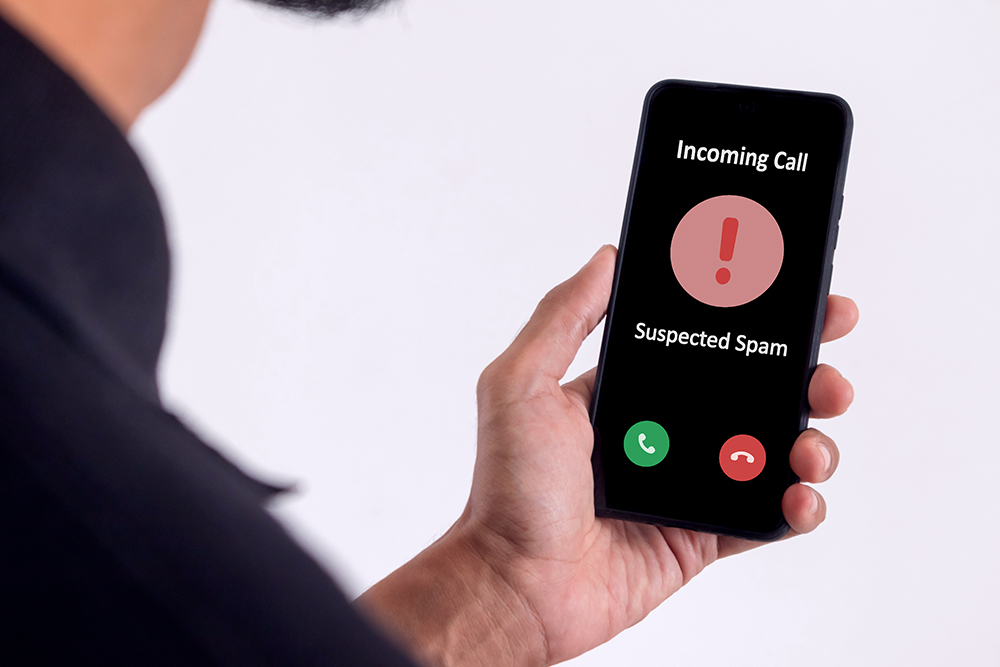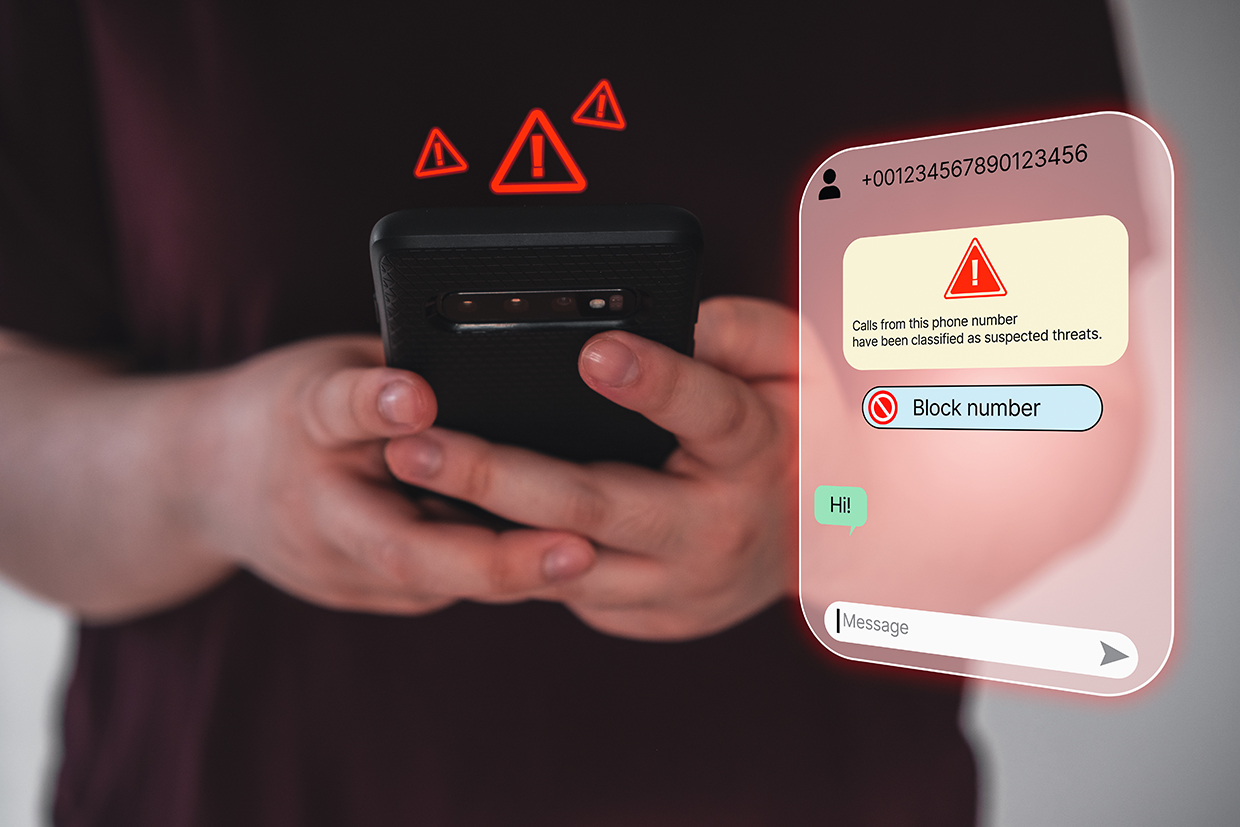Latest Anti Scam Efforts under MDDI
Figures for the period of 1 January to 31 December 2024

117 Million
potential scam calls blocked

50 Million
potential scam SMSes blocked

1.6 Million
attempts to install suspicious apps blocked

Over 44,900
scam-related websites disrupted
Initiatives by the Infocomm Media Development Authority (IMDA)
Blocking of commonly spoofed local numbers, robocalls, scam SMSes and scam-related links via SMS
IMDA partnered with telcos to implement a suite of anti-scam measures that strengthen safeguards for the public against scams coming through the telecommunication networks.
-
Since 2019, telcos have been blocking commonly spoofed local trusted numbers, such as emergency hotlines and government agencies. In addition, telcos have been blocking reported SMSes and scam links sent via SMS to Singapore users.
-
Subsequently in 2020, telcos blocked robocalls using pattern recognition technology.
-
IMDA also worked with the telcos and the police, to further tighten SIM card registration processes and strengthen accountability for SIM cards, minimising criminal exploitation. From April 2024, a limit of 10 postpaid SIM cards per subscriber has been put in place.
Feature to block international calls and SMSes
Recognising that many of these scam calls/SMSes come from overseas sources, IMDA worked with the telcos to introduce features for subscribers to block all incoming calls and/or SMSes from international numbers on their mobile phones.
To date, over 287,000 subscribers have activated the feature to block calls from international numbers, while over 219,000 subscribers have activated the feature to block SMS from international numbers. This same feature to block calls from international numbers has since been extended to residential fixed lines for subscribers of major telco operators in Singapore progressively since December 2024.
SMS Sender ID Registry (SSIR) regime
In 2023, IMDA implemented the full Singapore SMS Sender ID Registry (SSIR) regime where non-registered SMS Sender IDs will be labelled as "Likely-SCAM", to alert consumers to exercise caution when dealing with these SMSes.
The number of SMS scam cases fell by 70% in the first three months that the SSIR was mandated, and has remained low since. As of January 2025, over 4,000 organisations had registered with SSIR, which account for over 97% of all commercial SMS traffic in Singapore.
Visit the IMDA website for more details on their anti-scam measures.
Initiatives by the Cyber Security Agency of Singapore (CSA)
Enhanced Fraud Protection with Google
In February 2024, CSA partnered Google on a pilot for the Enhanced Fraud Protection (EFP) feature within Google Play Protect. This feature automatically blocks the installation of potentially malicious apps that use sensitive runtime permissions. As of December 2024, the EFP has successfully blocked 1.6 million installation attempts of potentially malicious apps across nearly 400,000 Android devices in Singapore. This prevented 25,000 unique apps from potentially being misused for financial fraud and scams. This feature is now being rolled out in other countries by Google, protecting citizens beyond Singapore.
Safe App Standard 2.0
Developed in consultation with industry stakeholders, CSA published its second version of the Safe App Standard (SAS) in October 2024. SAS 2.0 is a comprehensive guide for mobile app developers in Singapore, to enhance security measures for apps which carry a financial transaction feature. Its primary objective is to ensure that baseline security standards are met, to mitigate against the risk of financial frauds and foster trust within Singapore's mobile system.
Visit CSA's website for details on their anti-scam measures.
Initiatives by the Government Technology Agency of Singapore (GovTech)
Scam Analytics and Tactical Intervention System
GovTech, in partnership with the police and the Home Team Science and Technology Agency, jointly developed the Scam Analytics and Tactical Intervention System (SATIS), which leverages artificial intelligence and machine learning to triage, assess and disrupt scam-related websites swiftly. Additional capabilities were added to the SATIS suite of products, to disrupt online monikers, with planned improvements to disrupt other scam enablers such as payment channels and mobile numbers.
In 2024, the Singapore Government disrupted more than 57,700 mobile lines, 40,500 WhatsApp lines, 33,600 online monikers and advertisements, and over 44,900 websites that were scam-related. This is a significant increase in disruptions as compared to 2023, and it was made possible largely through collaborations with telcos and online platforms.
Visit GovTech's website for details on their anti-scam measures.
Initiatives by Open Government Products (OGP)
Enhanced ScamShield App
OGP enhanced the ScamShield App in August 2024, to expand ScamShield’s protection from a passive to an active role in combatting emerging scam variants. The enhanced app enables users to protect themselves by allowing them to check suspicious messages, calls and websites occurring on third-party platforms such as WhatsApp and Telegram. It also simplifies reporting and encourages more crowdsourced data to improve scam protection and scam intelligence, which in turn improves the data set and the app’s detection capabilities.
Since the enhanced app was launched, the app’s user base grew by 32% from 900,000 to 1.19 million users currently. More than 194,000 active users have used the “Check for Scams” or “Report a Scam” feature at least once, and have rated the app an average of 4.67/5 for in-app satisfaction.
Single SMS Sender ID gov.sg for all government agencies
Since 1 July 2024, the Singapore Government implemented a single SMS Sender ID, gov.sg for all government agencies. This replaces individual government agency Sender IDs. The change aims to help the public easily identify genuine government SMS communications and protect against government officials impersonation scams.
Visit OGP's website for details on their anti-scam measures.

